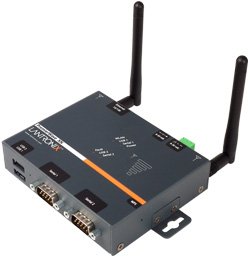The ionosphere is a layer of the Earth's atmosphere that is ionized by solar radiation, also called solar wind. Solar wind exists because the corona, which is the outermost layer of the sun's atmosphere, is extremely hot and wide. Because it is so wide, a constant stream of hydrogen and helium ions, called solar wind or plasma, is able to leave the sun's gravity. The solar wind flows away from the sun and toward the Earth, where it affects the Earth's magnetosphere, ionosphere, and magnetic field.
The ionosphere contains plasma and is made up of three layers. The lowest is called the D-region, reaching from 47-59 miles (75-95 km) above the surface of the Earth, and does not contain many ions. The next layer is called the E-region, reaching from 59-93 miles (95-150 km) and containing a slightly higher concentration of ions. The F-region contains the highest density of ions, and reaches from 93-621 miles above the surface.
This layer of the atmosphere is important to everyday life because it allows us to send AM frequency radio waves much farther than we would be able to without it. A fairly well-known side effect though is that when the sun has released a particularly strong solar flare, AM radio may experience a blackout. However, the ionosphere does not affect FM frequency radio waves because they have higher frequencies. Therefore, FM frequency radio waves cannot reach as far as AM frequency waves.
Scientists study the ionosphere largely by observing the aurorae, which are naturally-occurring displays of bright colors in the sky near the north and south poles. The aurorae occur because, at the poles, there is no magnetosphere. Because there is no magnetosphere, ions can enter the ionosphere and excite the plasma it contains, which then releases the energy as visible light. The frequency and intensity of aurorae is affected by the occurrence of solar flares and the intensity of the solar wind.
The ionosphere was discovered gradually through a series of scientific discoveries and observations beginning in 1864, when James Clerk Maxwell put forward a theory of how electromagnetic waves are created. In 1901, Marconi used that theory to transmit radio waves, a form of electromagnetic waves, across the Atlantic Ocean. He was able to do this because he knew that since he could not see the receiving station, the radio waves had to be bouncing off part of the atmosphere, allowing them to travel further than expected. In 1902, Oliver Heaviside and Arthur Kennelly learned of Marconi's findings about radio propagation and concluded that the atmosphere had a reflective layer. However, the layer was not actually named the ionosphere until 1926, when physicist Robert Watson-Watt wrote a paper about it.



No comments:
Post a Comment